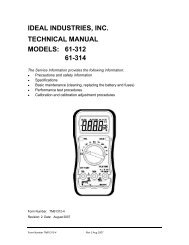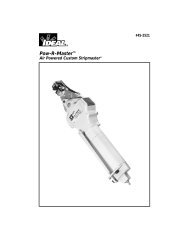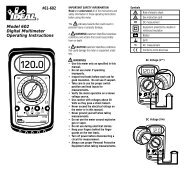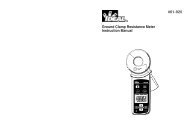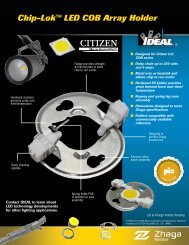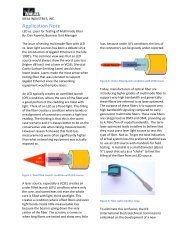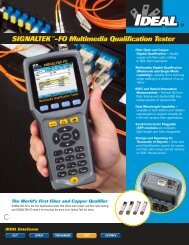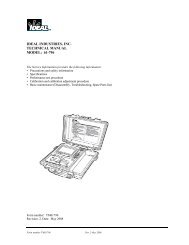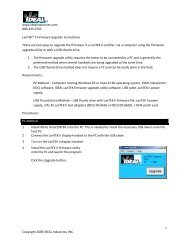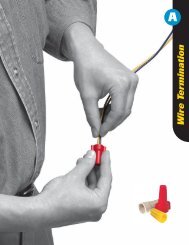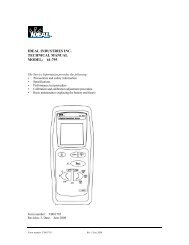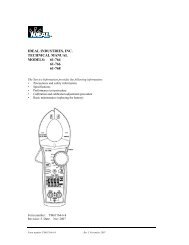LANTEK User Manual - Ideal Industries
LANTEK User Manual - Ideal Industries
LANTEK User Manual - Ideal Industries
Create successful ePaper yourself
Turn your PDF publications into a flip-book with our unique Google optimized e-Paper software.
Chapter 3<br />
Structured Cable Field Calibration and Testing<br />
VIEWING TDR RESULTS<br />
When the TDR diagnostic function is first started, the graphical plot is automatically<br />
scaled to the full length of the cable. A maximum of 2000 feet (609.6 meters) of cable<br />
results can be displayed on a TDR graph.<br />
When TDR is first activated, the left 10% of the graph displays prelaunch impedance<br />
signal rise distance data and the right 10% of the graph displays reflection data.<br />
‣ Press the LEFT/RIGHT ARROW keys to move the cursor horizontally. As the<br />
cursor moves, screen data displays will change to reflect cursor position.<br />
‣ Press the UP/DOWN ARROW keys to view TDR results from a different wire<br />
pair. The TDR test runs one time and displays the results.<br />
‣ Press the ZOOM keys to scale the graph. At the maximum or minimum limits<br />
the key becomes inactive.<br />
‣ TDR results can be uploaded and saved to a PC and printed.<br />
INTERPRETING TDR RESULTS<br />
Always note the cable pair currently being displayed. The shape of the reflections<br />
plotted for the pair can be used to identify and locate problems. If the cable pair has<br />
no problems along the entire length of the pair, the graph will appear as follows:<br />
‣ The graph has an upswing point on the left most 10% of the display (start of the<br />
cable).<br />
‣ The following 80% of the graph is relatively flat.<br />
‣ The graph has an upswing or downswing point on the right most 10% of the<br />
graph (end of the cable).<br />
At the end of the cable (right-side), a slope to the top means the pair is open, while a<br />
slope to the bottom of the screen indicates that the pair is shorted.<br />
EVALUATING A TDR GRAPH<br />
When evaluating the TDR graph, the first consideration should be the average<br />
impedance of the cable being tested:<br />
‣ A graph with sharp dips or spikes can identify anomalies.<br />
‣ For subtle problems, interpretations should be based on benchmark data<br />
obtained from the analysis of many cable segments.<br />
When anomalies are detected in the cable pair, the cursor is automatically placed on<br />
the first anomaly. Press the ARROW keys to highlight the anomaly of interest.<br />
Impedance and distance values will be displayed on the screen.<br />
3-37




